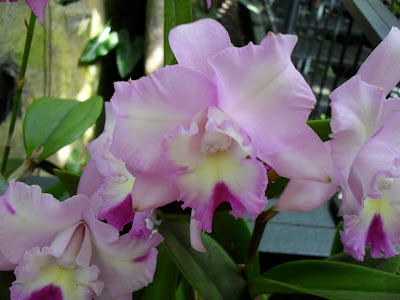Published: June 30, 2008
Jozef Szajna, a Polish playwright, set designer and theater director who through often nearly wordless productions evoked the beastliness of humanity, the suffocation of individuality and the oppressiveness of dictatorship — gaining acclaim even during the Communist era — died on Tuesday in Warsaw. He was 86. His death was announced by the Warsaw Academy of Arts, according to Agence France-Presse.
Mr. Szajna (pronounced SHY-nuh) was a Roman Catholic who survived five years in the Auschwitz and Buchenwald concentration camps.
“Today I have a name; then I was a number,” he once said.
In 1976, a production of Mr. Szajna’s play “Replika” was staged at the
Brooklyn Academy of Music. As the curtain rose, a smoldering mass appeared: garbage, tattered shoes, human limbs. It stirred. A begrimed hand reached out, touched a remnant of bread and dragged it below. Soon after, a crawling figure lunged at a mangled mannequin, crying out, “Mama, mama.”
Those were among the few words uttered by the four survivors, later joined by an aggressor, as they grunted and groaned through the heap of remnants of a once-flourishing civilization.
“It is a protest against war; it says, ‘Look at what we make of ourselves,’ ” Mr. Szajna told The New York Times, adding: “All the kings and queens, presidents and premiers should see ‘Replika.’ All of them at the
United Nations. Maybe even your politicians before one becomes president.”
In Poland, Mr. Szajna circumvented Communist censors by presenting his work as abstract expressions of opposition to fascism and to passivity in the face of repression: his productions were eloquent in their near-silence by speaking wordlessly.
Among his other plays are “Rejoinder,” “Reminiscence” and “Dante,” the latter based on the journey through the realms of the dead in the 14th-century “Divine Comedy” but laced with Mr. Szajna’s depictions of 20th-century hellishness.
“The primary accent in this type of theater falls on visual expression,” Malgorzata Kitowska-Lysiak, a professor of art history at the Catholic University of Lublin, Poland, wrote in a 2003 profile of Mr. Szajna.
Pointing out that Mr. Szajna never disregarded the actor “with his individual gestures, or the word,” Ms. Kitowska-Lysiak said, “Nevertheless, the most important role in his theater is allotted to visual signs and imagery: expansive scenery and often grotesquely oversized props.”
Mr. Szajna called his work, with its harrowing frozen moments, “visual narration.”
Off stage, Mr. Szajna spoke out through individual artworks: sculptures, paintings, prints and collages, many of which incorporated objects like worn strips of leather, chunks of rubber, fragments of fabric, body parts from dolls, lists of concentration camp survivors and barbed wire.
Mr. Szajna was born in the southeastern Polish city of Rzeszow on March 13, 1922. At 16, he won a national diving championship. At 18, while fighting with the Polish resistance, he was arrested by the Nazis. After a foiled attempt to escape from Auschwitz, he was sent to Buchenwald.
“Waiting for execution brought me closer to the problems of eternity,” he later wrote. “All that we believed in — races, classes, political views — were not important anymore.” His death sentence was commuted by a new commander at Buchenwald, and he spent the rest of the war as a slave laborer.
He then turned to art. Mr. Szajna graduated from the Academy of Fine Arts in Krakow, with a degree in graphics, in 1952. A year later, he earned a degree in stage design at the academy. For the next nine years, he taught there. At the same time, he designed scenery for many productions in Poland, particularly as one of the founders, managing director and artistic director of Teatr Ludowy (the People’s Theater) in Nowa Huta.
In 1971, Mr. Szajna was chosen to open a new venue in Warsaw, the Teatr Studio, housed within the Palace of Culture, a huge Stalinist-era building that was originally supposed to be headquarters for Soviet intelligence agencies.
“Our theater,” Mr. Szajna told The Times in 1981, “speaks against terror, against threats to man’s humanity, against the loss of individualism and independence.”
Though he was not Jewish, Mr. Szajna was cited by the Center for Holocaust and Genocide Studies at the
University of Minnesota as “the most important theater director and artist in Poland whose work deals with the memory of the Nazi period and the Holocaust.”
The number on Mr. Szajna’s arm was 18729.
NYTimes
|
Józef Szajna, Zapomnienie, 1968
|
malarz, scenograf, reżyser, dyr. teatru; w czasie wojny więzień hitler. obozów w Oświęcimiu i Buchenwaldzie - przeżycia tego okresu odbijają się w twórczości Sz.; łącząc techniki malarskie z
kolażem i asamblażem, tworzył dramatyczne obrazy oddające nastrój zniszczenia, zagłady, przemijania (
Epitafium I, Dramat III); 1953-55 scenograf w Teatrze Ziemi Opolskiej, skąd z K. Skuszanką i J. Krasowskim przeniósł się do
Teatru Ludowego w Nowej Hucie, gdzie jego opracowania plastyczne w wyraźny sposób wpływały na kształt przedstawień (m.in.:
Księżniczka Turandot C. Gozziego,
Myszy i ludzie wg J. Steinbecka,
Jacobowsky i pułkownik F. Werfla,
Burza Szekspira,
Radość z odzyskanego śmietnika wg J. Kadena-Bandrowskiego,
Dziady A. Mickiewicza); współpracował sporadycznie z innymi teatrami; 1962 był współtwórcą
Akropolis S. Wyspiańskiego w reżyserii J. Grotowskiego; 1963-66 dyr. Teatru Ludowego w Krakowie, debiut reżyserski (
Rewizor M. Gogola, 1963); 1972-82 dyr. Teatru Studio w Warszawie, gdzie rozwijał teatr zdominowany metaforyką plastyczną, w którym aktor sprowadzony został do roli nadmarionety; autonomiczna kreacja rzeczywistości ukazywała cywilizację upadku (jako wysypisko żelastwa i zbiorowisko kalekich postaci):
Witkacy;
Gulgutiera (współautor scenariusza - M. Czanerle),
Replika (kolejne wersje),
Dante, Cervantes; twórca environments (np.
Ściana butów w galerii Zachęta w Warszawie,
Reminiscencje - pamięci artystów straconych w Oświęcimiu oraz happeningów (np.
Deballage w Nicei); od lat 70. maluje obrazy o charakterze metaforycznym; (2003) dr h.c. Uniw. Śląskiego
.
http://images.google.com/imgres?imgurl=http://www.teatry.art.pl/portrety/szajna/wariacjet.jpg&imgrefurl=http://www.teatry.art.pl/portrety/szajna/teatrj.htm&h=246&w=300&sz=24&hl=en&start=15&sig2=t6NGl_cSEIWRW9u48-LwJA&um=1&tbnid=7M9JvrJyOXAvcM:&tbnh=95&tbnw=116&ei=K-doSIiGGIHIef3Toc0P&prev=/images%3Fq%3DJozef%2BSzajna,%26um%3D1%26hl%3Den%26sa%3DN
http://www.ejpress.org/article/28263
-->














